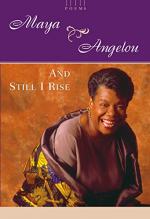
|
| Name: _________________________ | Period: ___________________ |
This test consists of 15 multiple choice questions and 5 short answer questions.
Multiple Choice Questions
1. What technique does the first line of the poem, "You may write me down in history," introduce?
(a) Allegory.
(b) Apostrophe.
(c) Verbal irony.
(d) Catalog.
2. What techniques are used in line 19, "’Cause I laugh like I've got gold mines"?
(a) Sibilance and onomatopoeia.
(b) Assonance and sibilance.
(c) Onomatopoeia and alliteration.
(d) Alliteration and assonance.
3. What precious stones does the speaker use to evoke beauty and value in the simile in line 27?
(a) Rubies.
(b) Sapphires.
(c) Emeralds.
(d) Diamonds.
4. What technique is used in line 29, "Out of the huts of history’s shame"?
(a) Allegory.
(b) Oxymoron.
(c) Allusion.
(d) Juxtaposition.
5. Which is the most logical description of who "You" is in line 1?
(a) People of the past.
(b) A romantic partner.
(c) An unnamed oppressor.
(d) Scholars and critics.
6. How does the speaker characterize herself in line 4?
(a) Brave and perseverent.
(b) Intelligent and curious.
(c) Lively and confident.
(d) Lighthearted and silly.
7. Which technique is frequently used at the beginnings of stanzas?
(a) Rhetorical question.
(b) Onomatopoeia.
(c) Internal rhyme.
(d) Cacophony.
8. What technique is used in lines 7 and 8, "’Cause I walk like I've got oil wells/ Pumping in my living room"?
(a) Personification.
(b) Juxtaposition.
(c) Simile.
(d) Metaphor.
9. In line 17, what kind of a person is described by the word "haughtiness"?
(a) Mean-spirited and petty.
(b) Arrogant and proud.
(c) Strange and eccentric.
(d) Sneaky and dishonest.
10. Which technique is used in line 9, "Just like moons and like suns"?
(a) Allusion.
(b) Parallelism.
(c) Euphemism.
(d) Dialect.
11. Which is the best definition of "beset" in line 6?
(a) Troubled.
(b) Decorated.
(c) Inspired.
(d) Cradled.
12. What words create a refrain in the final two stanzas of the poem?
(a) "Again I rise."
(b) "Still I rise."
(c) "I rise."
(d) "I rise and rise."
13. Why is the speaker's past "rooted in pain" (line 32)?
(a) Because of the death of a loved one.
(b) Because no one appreciates her value.
(c) Because of bigotry and discrimination.
(d) Because she has been abandoned by someone she loves.
14. What technique is used in line 21, "You may shoot me with your words"?
(a) Metaphor.
(b) Simile.
(c) Innuendo.
(d) Kenning.
15. Which two things does the final stanza use to represent the past and present?
(a) A seed and a sprout.
(b) Night and daybreak.
(c) Gathering clouds and rain.
(d) The directions east and west.
Short Answer Questions
1. Which is the best definition for "trod" in the context of line 3?
2. What is the primary quality that the speaker's stanza eight description of a body of water is intended to convey?
3. In the fourth stanza, what kind of person does the speaker ask if "you" want her to be?
4. What kind of "certainty" does the speaker claim to have in line 10?
5. In the final quatrain, what does the speaker wonder about upsetting "you" with?
|
This section contains 466 words (approx. 2 pages at 300 words per page) |

|




